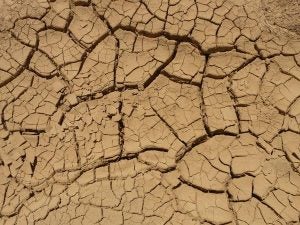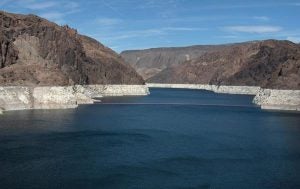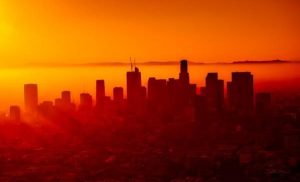Effects of hot, dry winters in California
Your damp umbrella doesn’t tell the whole story as Tuesday will mark the end of one of the hottest and driest winters ever for California. USC experts say such conditions will become the seasonal norm due to global climate change. Despite recent storms, winter featured wildfires, record heat, low rainfall and less snow across California and the Southwest. At least 70 percent of the region is in drought — a condition that’s prevailed across the region every year but one since 2000, according to the U.S. Drought Monitor. Meanwhile, snow in great mountain ranges — Sierra Nevada, Rockies and Wasatch — is far below normal.
Contact: Gary Polakovic, (213) 740-9226 or polakovi@usc.edu
 Expect dry, hot winters to continue
Expect dry, hot winters to continue
Sarah Feakins, associate professor of Earth sciences
She studies historical drought, using the past as a key to present. The future? Hot, dry winters will replace cold, dry winters as Earth’s climate shifts. Of note:
- 2017 was one of the longest and hottest dry spells ever for California — lasting into fall and winter.
- A single wet winter 2016-17 did little to solve California long-term water woes.
- Irrigation pumping is drying wells faster than nature can replenish.
“It’s been an exceptionally dry season. And the fact that it’s getting hotter due to climate change means there’s not only less rainfall, but less snowpack, which California needs to get enough water to last through the year,” Feakins said.
Contact: feakins@usc.edu or (213) 740-7168
 What impact does the ocean have on the weather?
What impact does the ocean have on the weather?
Lowell Stott, professor of Earth sciences
He studies how ocean temperatures influence climate behavior with a focus on drought cycles in the U.S. West. Stott is a reviewer for the Intergovernmental Panel on Climate Change (IPCC). He also teaches a climate change class. Of note:
- Warmer ocean temperatures in the north Pacific can reduce frequency of winter storms reaching California and the West.
- Some prehistoric droughts lasted hundreds of years.
- Whipsaw weather will become increasingly common.
“As the Pacific Ocean continues to warm, it means there is increased likelihood that California will experience dry winters. We face the prospect of less snow accumulation and consequently, reduced water availability. We must prepare for greater variability in the coming years,” Stott said.
Contact: stott@usc.edu or (213) 740-5120
 Will L.A. become more of a desert?
Will L.A. become more of a desert?
Andrew Gracey, associate professor of biological science
He studies climate impacts on ocean ecosystems. Of note:
- Climate change impacts the ocean because it absorbs so much atmospheric carbon dioxide.
- Changes in the sea shape weather across the land.
- California marine life is moving northward to find cooler conditions.
“We have to look at this in a global perspective and not an isolated regional perspective. If you look at it historically, L.A. was always a dry region and it’s becoming more dry. Desert areas will encroach more on L.A.,” Gracey said.
Contact: gracey@usc.edu or (213) 740-2288
 Local impacts of climate change
Local impacts of climate change
George Ban-Weiss, assistant professor of civil and environmental engineering
He studies impacts of the built environment and global climate change on L.A.’s climate and air quality. Ban-Weiss has documented L.A.’s “heat island” effect and studies how weather affects smog, temperatures and human comfort in L.A. Of note:
- L.A. is about 2 degrees F hotter during the day and 6 degrees hotter at night due to the effects of urbanization.
- Those long-term increases will likely double this century due to global warming.
- Heat affects people disproportionately due to income and geography.
“Climate change is causing increases in urban temperatures. We already have the heat island effect caused by historical urbanization. The two effects combined are like a double whammy on urban temperatures,” Ban-Weiss said.
Contact: banweiss@usc.edu or (213) 740-9124
